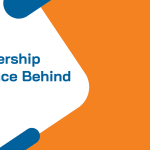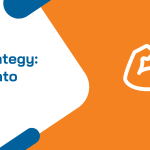
From Idea to Impact: Making Innovation a Core Business Function
Innovation has long been viewed as a creative spark — a moment of inspiration that transforms a company’s future. But in reality, the organizations that sustain innovation over time don’t depend on luck or creativity alone. They rely on systems that pave the way for growth and transformation.
At Apex GTS Advisors, we believe innovation is not an event — it’s an engine. To thrive in an increasingly complex business landscape, leaders must treat innovation as a core business function that’s as intentional and measurable as finance, marketing, or operations.
The Risk of Treating Innovation as Occasional
For many growing companies, innovation occurs in bursts — a brainstorming session here, a new initiative there. While these moments can be energizing, they often don’t lead to lasting change. This lack of sustained innovation can cause missed opportunities, stagnant growth, and a company that is full of ideas but short on results.
Without systems in place, innovation quickly loses momentum. Teams return to their routines, and promising ideas fade under the pressure of day-to-day demands. Over time, this lack of follow-through leads to three common breakdowns:
- Inconsistent execution. Ideas are generated but not implemented with precision or accountability.
- Siloed progress. Departments innovate independently without cross-functional alignment.
- Leadership fatigue. Executives spend their time firefighting instead of driving strategy.
The result? A company full of ideas, but short on results.
That’s where structured innovation comes in. By connecting creativity to Strategic & Operational Planning and embedding it into daily rhythms, businesses create innovation systems that are sustainable, scalable, and measurable.
Turning Creativity Into a System
True innovation doesn’t happen by accident — it happens by design. Leaders who intentionally architect systems for innovation don’t just inspire teams; they empower them to act with clarity, confidence, and a sense of control over their future.
Here’s how organizations can transform innovation from an unpredictable effort into a disciplined process:
- Align innovation with strategic goals.
Innovation must serve the broader business strategy. Whether it’s improving customer retention, expanding into new markets, or enhancing operational efficiency, clarity about why you’re innovating keeps teams focused and accountable. Apex GTS Advisors helps leaders establish that clarity through Organizational Transition & Alignment, ensuring every idea supports measurable outcomes. - Build repeatable processes.
Creativity thrives in structure. Define clear stages for ideation, validation, piloting, and scaling — and treat them as part of your business rhythm. This approach allows innovation to flow continuously rather than sporadically. - Assign ownership and accountability.
Innovation without ownership is just an aspiration. Assign clear responsibility for innovation outcomes — supported by Fractional Executive Leadership roles when additional bandwidth or expertise is needed. - Empower people through leadership development.
Innovation isn’t just about systems; it’s about mindset. Through Leadership Development & Coaching, we help leaders build teams that embrace experimentation, take calculated risks, and learn quickly from outcomes. - Measure, reflect, and refine.
Sustainable innovation is iterative. Use metrics, feedback loops, and review sessions to evaluate impact. Our Executive & Board-Level Advisory Services provide the governance and insight needed to sustain these cycles long-term.
Visit our Resources Library for guides and templates that support building this rhythm into your organization.
Culture as the Catalyst
Even the best systems will falter if the culture resists change. True innovation thrives in environments where curiosity is encouraged, feedback is welcomed, and people feel safe to challenge the status quo.
That’s why we integrate Culture Readiness & Development into every engagement. A culture that values learning and iteration doesn’t wait for inspiration — it creates it.
By coupling cultural alignment with structured systems, organizations unlock innovation at every level. Employees move from asking “Can I?” to confidently saying “Here’s how.”
Case in Point: The Shift from Reactive to Proactive
Consider a mid-sized company that relied on occasional brainstorming retreats to drive innovation. Ideas were abundant, but few ever gained traction. Teams lacked accountability, and leaders spent most of their time reacting to operational bottlenecks.
After restructuring with Apex GTS Advisors, the organization implemented a disciplined innovation framework that aligned with its growth strategy. Using Organizational Mapping & Restructuring and quarterly Team Workshops & Offsite Sessions, the company introduced measurable innovation KPIs, assigned process owners, and built feedback loops across departments.
Within six months, the company saw a 30% increase in cross-functional collaboration, faster execution timelines, and higher employee engagement scores — proving that structure doesn’t stifle creativity; it scales it.
The Role of Continuous Learning
Innovation thrives when leaders continuously learn, adapt, and refine their approach. That’s why Apex GTS Advisors provides practical tools and insights through our Resources — including the Cracking the Code of Entrepreneurial Growth eBook and the Stages of Growth X-Ray Guide. These resources are designed to help leaders assess where bottlenecks occur, identify opportunities for scalable innovation, and ensure that growth remains intentional rather than accidental.
These tools help leaders assess where bottlenecks occur, identify opportunities for scalable innovation, and ensure that growth remains intentional rather than accidental.
Innovation as a Profit Multiplier
When organizations commit to disciplined innovation, they unlock exponential returns. Structured systems create consistency, and consistency builds trust — both internally and externally.
Here’s what happens when innovation becomes operationalized:
- Teams handle greater complexity without losing agility.
- Processes improve efficiency and reduce costs.
- Employees become more engaged and purpose-driven.
- Leaders spend less time firefighting and more time envisioning the future.
This is where Employee Engagement & Retention intersects with innovation — when people see how their contributions fuel progress, motivation, and loyalty rise.
From Systems to Strategy
At its core, innovation is a leadership choice. It’s a decision to replace chance with design and to build a business that grows intentionally. The leaders who thrive in 2026 and beyond won’t be those chasing the next big idea — they’ll be the ones who build systems that generate them consistently.
If your company is ready to take innovation from idea to impact, explore our Areas of Expertise and connect with Apex GTS Advisors. Together, we’ll help you architect the systems, culture, and leadership needed to make innovation your organization’s most dependable advantage.





